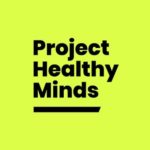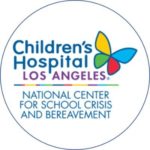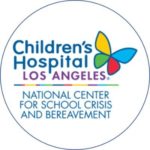Physical & Mental Health
- Depression/Suicide (34)
- Emotional Intelligence (12)
- Health Care Resources for Youth (31)
- Mental Health (78)
- Mindfulness (29)
- Nutrition (51)
- Obesity Prevention (34)
- Resiliency (14)
- Social-Emotional Learning (SEL) (75)
- Trauma-Informed Care (44)
Being a teen is stressful! Whether it’s school, friends, or dating, the teen years are full of difficult changes-both mentally and physically. If you’re like many teens, you may have difficulty dealing with stress in effective ways. You aren’t alone, and there are things you can do to stay calm, no matter how stressful life becomes. All you need to do is stop, breathe, and be mindful and aware in the present moment.
As a parent, caregiver, or other trusted adult, it can be hard to know how to support a youth who is struggling. BC Children’s Kelty Mental Health Resource Centre provides peer support, information, and resources to help you talk to and guide a youth in your life to the services and supports they may need.
We’re a collective of socially-minded creatives, entrepreneurs, musicians, inventors, engineers, doctors, researchers, business leaders, policy wonks, and every-day problem solvers dedicated to building a more supportive world. Mental health can feel like a maze. We’re here to help you navigate.
Find mental health resources based on how you’re feeling or what you’re going through.
Children with childhood traumatic grief often try to avoid talking about the deceased person or their feelings about the death, but talking about it may be important for resolving trauma symptoms that are interfering with the child’s ability to grieve. If symptoms similar to those listed on this sheet persist, professional help may be needed. The professional should have experience in working with children and adolescents and specifically with issues of grief and trauma.
This resource highlights seven key challenges to providing school- or program-based mental health support across early childhood, K–12 schools, and higher education settings, and presents seven corresponding recommendations.
This tip sheet targets Victim Service Providers (VSPs), Mental Health professionals (MHPs), emergency management planners, and others who serve victims impacted by an MVI. It contains information to prepare communities to address the mental health needs of victims and family members, as well as improve trauma- and grief related symptoms in the immediate aftermath and throughout the recovery process.
Ideal interventions promote the evidence-based principles of Psychological First Aid (PFA), including: safety calming, self- and community-efficacy, social connectedness, and a sense of hope/optimism. Information relevant to this event and links to brief, easy to read, action-oriented education fact sheets are provided in the link below.
Basic tips for how to talk with a child of any age about gun violence.
Violent attacks that target people because of their identities happen around the world with disturbing frequency. What can educators do to help students reflect on and understand these attacks?
These guidelines are designed to help school administrators, teachers, and crisis team members respond to the needs of students and staff after a loss has impacted the school environment, such as after the death of a student or staff member or when deaths occur that affect many people in the community.
This guide offers advice on how to talk to children about tragic events, such as shootings and terrorist attacks, that they are likely to hear about at school and/or on the news.
High profile acts of violence, particularly in schools, can confuse and frighten children who may feel in danger or worry that their friends or loved-ones are at risk. They will look to adults for information and guidance on how to react. Parents and school personnel can help children feel safe by establishing a sense of normalcy and security and talking with them about their fears.











